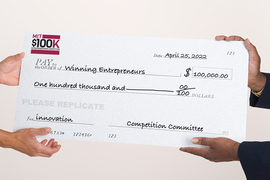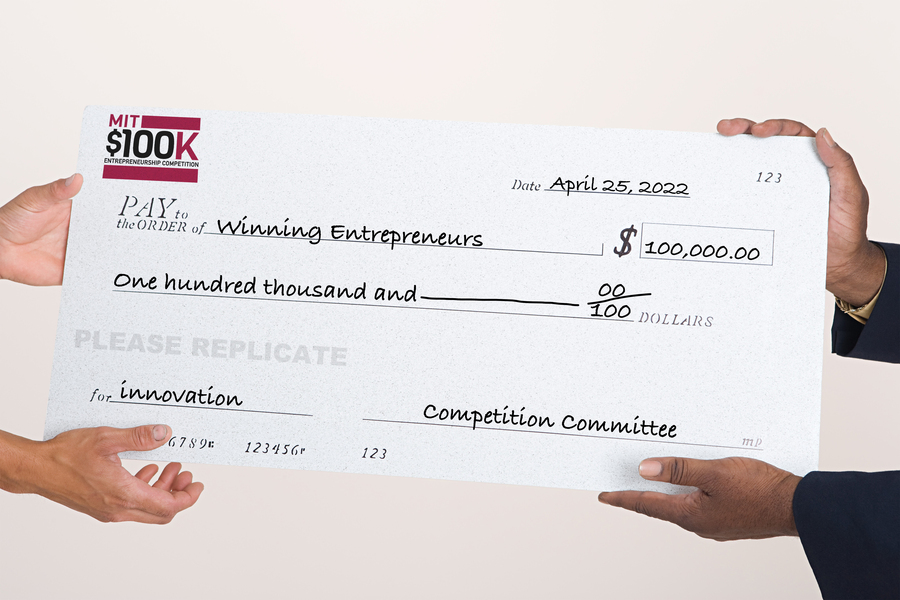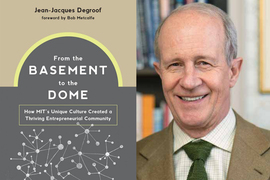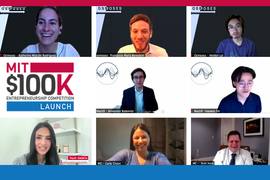In two weeks, students will gather in Kresge Auditorium for the 26th annual MIT $100K Entrepreneurship Competition. The event has served as a springboard for a number of iconic companies over the years. But the full impact of the $100K competition has been far wider.
For more than 20 years, the $100K format — which includes mentorship, funding, and support services for teams before the final pitch competition — has also been replicated around the world.
Started by MIT students and alumni with $100K connections, these competitions have cumulatively helped entrepreneurs start thousands of companies that have gone on to raise billions of dollars. They have also helped build innovation ecosystems that have transformed local economies.
The student and alumni-led initiatives have been supported by local governments, other universities, and private organizations. MIT has also supported the replication of the $100K competition through programs such as the Global Startup Workshop (GSW) and the Regional Entrepreneurship Accelerator Program (REAP).
In some cases, the initiatives have taken on a life of their own after MIT community members got them started. Others have shuttered over time, although organizers say they led to positive changes in perceptions around entrepreneurship. All have been driven by a desire to bring MIT’s unique entrepreneurial mindset to other regions.
“Business competitions like the $100K can be very powerful, especially in regions that don’t have much of a startup culture, where you really want to galvanize young people to participate in entrepreneurship,” says Fiona Murray, associate dean of innovation and inclusion and the William Porter Professor of Entrepreneurship at MIT Sloan. “Seeing a bunch of young people with diverse backgrounds up on stage presenting new ideas gets people to say, ‘Someone like me could go and do that.’”
A student-run history
MIT students were also the driving force behind the original $100K competition. Students in MIT’s Entrepreneurship Club originally conceived of the business-plan competition in 1989, setting a goal of a $1,000 grand prize before earning enough support to expand it to $10,000 in the inaugural year.
The competition was an immediate hit, and within a few years participants began wondering if the model could spur entrepreneurial activity away from MIT’s campus.
In the mid 1990s, student organizers of what was by then the $50K competition started the Global Startup Workshop to support people in other regions interested in starting similar competitions. Today GSW is an independent, student-run conference and has held workshops focused on bolstering entrepreneurial ecosystems on six continents with participants from over 70 countries.
Around the time the GSW began, Juan Martinez-Barea MBA ’98 was working on the $50K competition organizing team.
“Thanks to that experience, I found my purpose in life,” Martinez-Barea says. “I came to MIT as an engineer, but I discovered a love for entrepreneurship.”
Martinez-Barea decided to bring the model to his hometown of Seville in Andalusia, Spain. He worked with Ken Morse, the former head of the Martin Trust Center for Entrepreneurship, and partnered with Sally Shepard MBA ’98 to launch the competition. Martinez-Barea was amazed at the reception he got when he pitched the idea to students, investors, universities, and companies.
Murray says collaboration between different stakeholders is one of the program’s biggest benefits.
“It’s a beacon,” she says of the $100K. “It attracts motivated people, gives them a timeline, helps them build a network and teams, provides mentorship, etc. It has all the elements you’d need to build a really effective innovation ecosystem.”
In its first year, in 1999, the Andalusia competition attracted 300 entrepreneurs with business ideas in areas ranging from microelectronics to biotechnology, artificial intelligence, and robotics. It also received a large amount of media attention — Martinez-Barea says the most prominent newspaper in Spain ran a picture of the competition on its front page with the headline “The Spanish Silicon Valley.” More than 100 startups were launched from the competition over the ensuing years.
Around that time, another group of $100K organizers at MIT, including Victor Mallet ’02, started the Ghana New Ventures competition. They received funding from MIT to host the first competition over MIT’s Independent Activities Period in 2001. The event taught university students how to pursue business ideas and connected them to mentors.
“Working on the competition at MIT was the most inspiring thing I did as an undergraduate,” Mallet says. “I wanted to see if it would also work in Ghana and inspire people there, and I think it did. [Entrepreneurial thinking] was a brand new thing in Ghana. People were really excited about it.”
Miguel Palacios MBA’99 participated in the $50K competition (which would expand to $100K a year later) as a student at MIT. In 2003, after a few years in management consulting, he began working to establish an entrepreneurial ecosystem at the Technical University of Madrid. It was easy deciding what one of his first initiatives was going to be. The entrepreneurship competition he helped build, called actúaupm, is currently in its 19th year and has helped create more than 300 companies. Palacios says hundreds of teams participate and around 20 companies emerge from it each year.
“The key [to the competition] is the phases,” he says. “The initial phase is very low-risk and you can play around with your idea. With other models like incubators, people are deciding who gets in and who doesn’t. With the competition, you permit everybody to participate in the ecosystem, so you’re bringing in a much more diverse pool of people with different ideas and capabilities. You are also letting people see that entrepreneurship may be a career option that can generate progress and wealth.”
In 2004, Neil Ruiz PhD ’14 and other students started the Philippine Entrepreneurship Startups Open (PESO). The group received support from MIT’s PKG Public Service Center to travel to the Philippines to establish local partnerships.
“My Filipino classmates and I were asking what we could do to incentivize staying in the country,” Ruiz recalls.
The team was able to get some of the most prominent business leaders in the Philippines to judge the first year’s event, and the winners got to ring the bell at the Philippines Stock Exchange the day after winning.
“It was a way of helping the entrepreneurs set big goals for themselves,” Ruiz says. “There were some really good ideas right away. It was so inspiring.”
These types of entrepreneurship competitions can make a big impact in places where entrepreneurship isn’t as common as it is in the U.S., says Mallet.
“Other places can have cultural barriers to entrepreneurship, so it helps those places to have someone who’s been exposed to the MIT and American way of doing things take that approach back to those communities,” Mallet says.
Murray, who has helped set up $100K-like competitions in regions around the world as part of MIT REAP, agrees that the $100K format can bolster entrepreneurial thinking.
“One of the most powerful results of the $100K is inspiring culture change,” Murray says. “Even though only a small fraction of the things that get pitched move forward, it begins to show young people the art of the possible.”
Multiplying MIT’s impact
In 2007, the Global Startup Workshop spun out of the $100K to become an independent organization run by MIT students. One of GSW’s organizers at the time, John Harthorne MBA ’07, who was also part of the winning $100K team that year, went on to found MassChallenge, a global startup accelerator that to date has helped nearly 3,000 companies cumulatively raise $8.6 billion.
MassChallenge is one of many initiatives with direct ties to the $100K that are still operating today. In addition to Palacios’ competition, which was eventually taken over by his former university in Madrid, PESO was adopted by the Ayala Foundation to provide more stable funding.
The efforts show the crucial role of students in exporting MIT’s approach to entrepreneurship to the world. In that process, they’ve multiplied MIT’s impact in ways that are difficult to quantify.
Martinez-Barea, for instance, is still getting contacted by people interested in replicating his Andalusia competition more than 20 years later. He says many regional governments have replicated the format to spur entrepreneurship in their economies.
“It was a matter of social responsibility in my case,” Martinez-Barea explains. “I was interested in creating wealth and prosperity in Spain through this, and it became an engine of economic development. I think the reason others have replicated [the $100K model] is simple: Because it works.”









